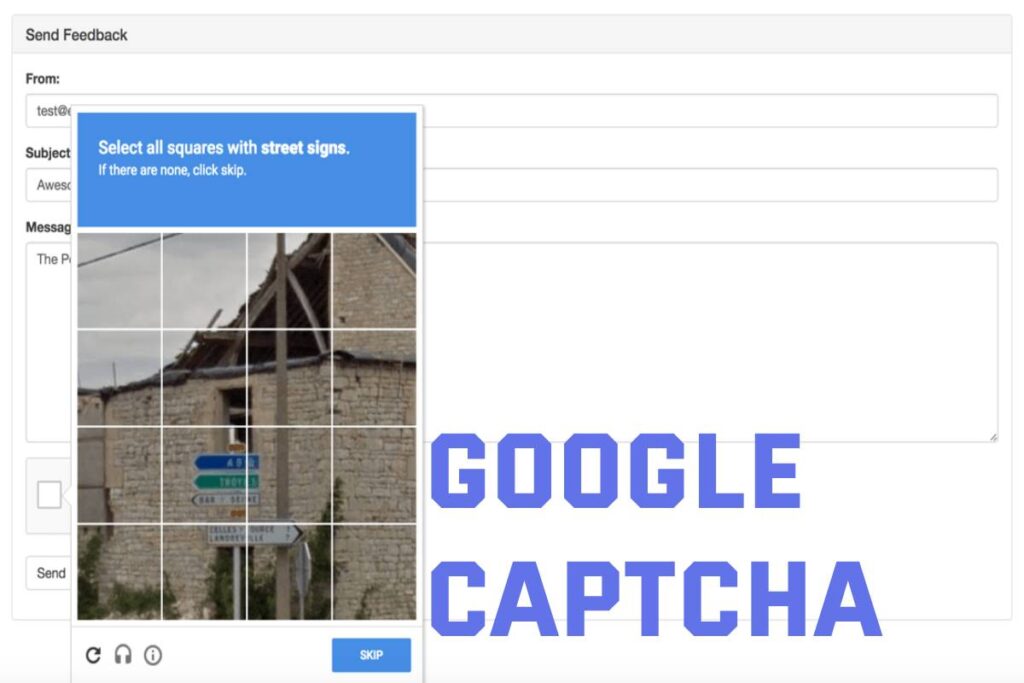Google CAPTCHA
Table of Contents
About
The term Google CAPTCHA is an acronym for “Completely Automated Public Turing Test to Tell Computers and Humans Apart.” It means Fully Automated Public Test of Turing to Differentiate Human Beings from Computers. Therefore, it is an inverse Turing test, in which humans have to demonstrate with this technology that they are humans and not machines.
History of Google CAPTCHA
- In the 1990s, the Internet was in excessive chaos due to spam formed by several spam bots full of email inboxes and online media.
- But in 2000, a 22-year-old called Luis von Ahn invented a system to control all that automatic advertising.
- It forces those who register in meetings and emails to prove that they were human and not computer programs.
- And that is how Google Captcha was born, a test in which you had to recognize scribbled.
- It is difficult-to-read letters for just a few seconds during the registration process, something easy for humans but difficult for bots.
- But there was a problem with this system. It demanded a lot of effort from users for nothing to demonstrate their humanity.
- Therefore, to make the helpful system, it had to be evolved, and reCaptcha was born.
Captchas vs ReCaptcha
- Colloquially, both Captcha and reCaptcha are Captcha, basically because it was the first term that coins for this technology.
- There are still several types of Captcha, that’s true, but the most widespread right now is reCaptcha, which is an evolution of the first Captcha.
- Therefore, when you hear about Captcha, keep in mind that the conversation will include both reCaptcha and other possible alternatives that may be developing by other companies.
- Meanwhile, when we specify reCaptcha, it refers exclusively to the technology that Google uses, although there may be other similar ones.
- It is a technology that, by definition, has to evolve periodically.
- Over time, researchers and spam companies discover how the internal algorithms that identify bots work and even use artificial intelligence to bypass them.
- So those responsible for Captchas and Recaptcha have to continually improve them, trying not to affect the difficulty for the actual user.
- The context in which Google first presented and the second version of reCaptcha in 2014 and a third in 2018.
What is the Purpose of Captchas?
- The simplest field of action of captchas is that of web applications that request data from users.
- Imagine the case of an electronic store that allows its customers to evaluate all their purchases with comments.
- The store’s priority is probably ensuring that their customers or human users have written the entries.
- We find in the opposite, automatically generated analyses that in the worst-case include a link to a competitor’s store.
- We can avoid it by protecting online forms with a captcha that forces users to verify their human nature before submitting their comments.
- These captchas are found today in almost all areas. It is necessary to differentiate people from bots.
- It includes registration forms for email services, newsletters, forums, social networks, and online surveys or web search engine services.
- Throughout all this time, various methods develop with which to carry out this human verification.
- However, it considers accepted that no procedure guarantees absolute security against spam and that, in any case, it is usability that comes off the worst.
Different types of Captcha to differentiate humans and bots
- The concept that supports the Captcha is on the assumption that despite the advance that characterizes artificial intelligence.
- There are still differences in terms of man’s rational capacity versus that of computer programs.
- Therefore, each Captcha includes at least one task that, while a person should solve it without great difficulty, places a machine before an insurmountable barrier, at least in theory.
- It can broadly differentiate Captcha-based verification tools from text-based, graphical, auditory, mathematical, logical, and playful means.
1. Text-based Captchas
- The oldest form of online verification is the text captcha. It is the one in which known words and alphanumeric combinations distort so that they are barely recognizable.
- To pass this test, the user has to decipher what word or sequence it is and type it with the keyboard in the answer field.
- The most classic procedures used in creating text captchas are Gimpy, EZ-Gimpy, Gimpy-r, and Simard’s HIP.
2. Graphic Captchas
- Image-based captchas are an alternative to text captchas: instead of presenting the user with an alphanumeric sequence.
- Visual captchas rely on graphical elements that are understandable at first glance.
- It uses images with everyday motifs placed in mosaics.
- The user has the mission of clicking on a specific motif, identifying similar motifs, or discovering a semantic relationship between them.
3. Playful Captchas
- Web admins concerned about not spooking their visitors with cryptic captchas or complicated math operations.
- We can join the current trend towards gamification.
- Providers like SweetCaptcha or FunCaptcha offer entertaining games that can integrate into captchas.
- SweetCaptcha relies on the associative capacity of people and poses straightforward classification tasks to the visits of a website.
- As in the following example, it is enough to transfer the drumsticks to the drum to demonstrate the human quality of the user.

